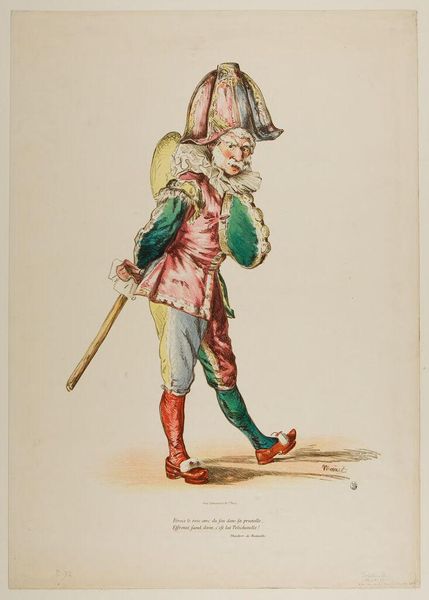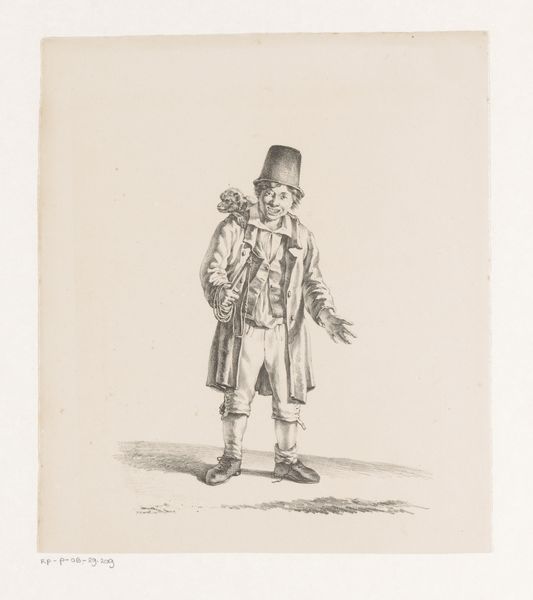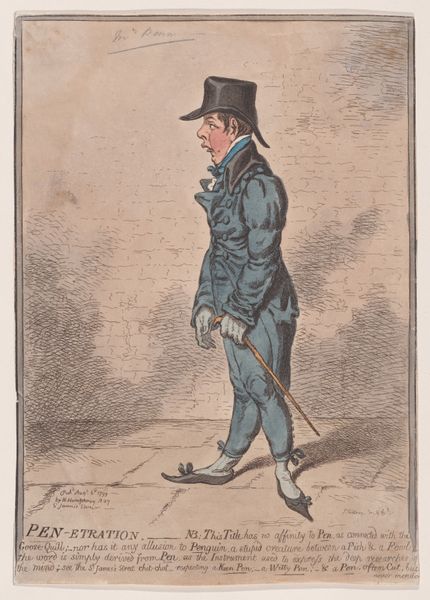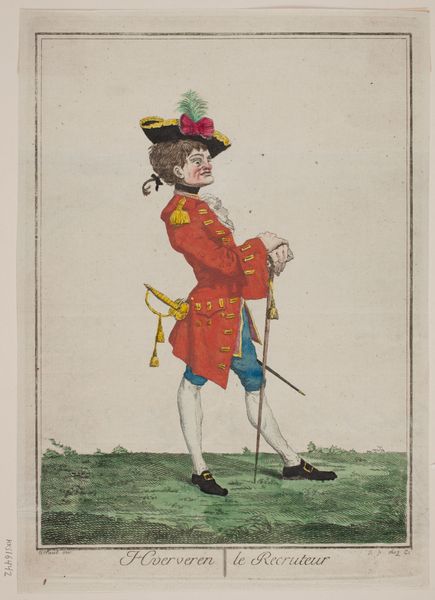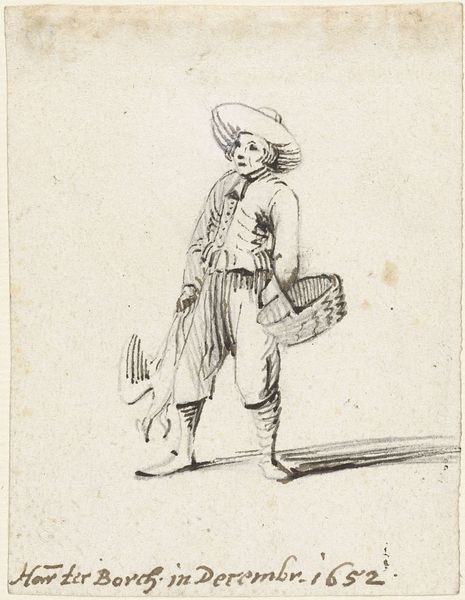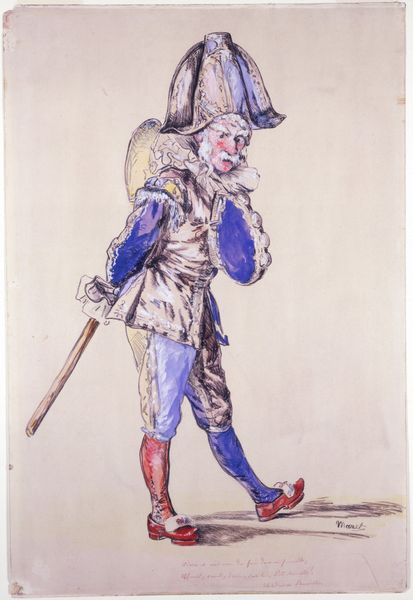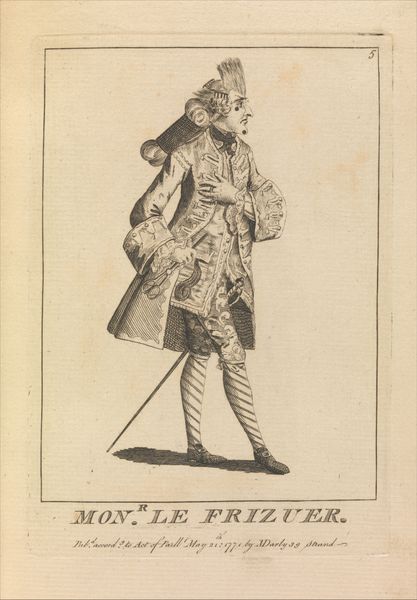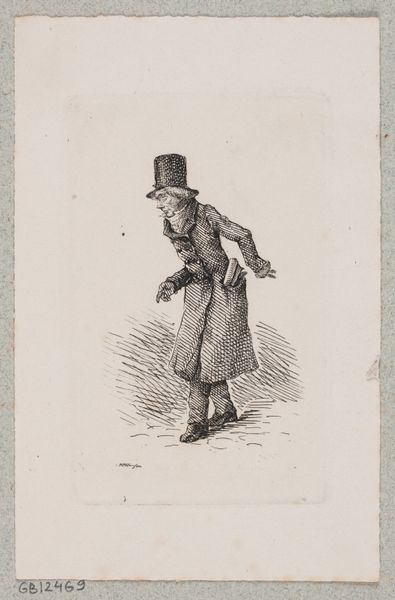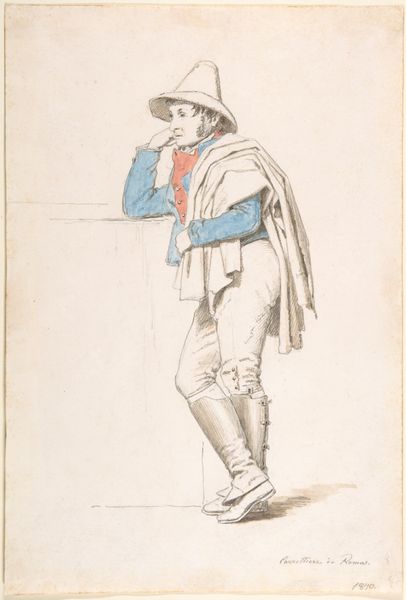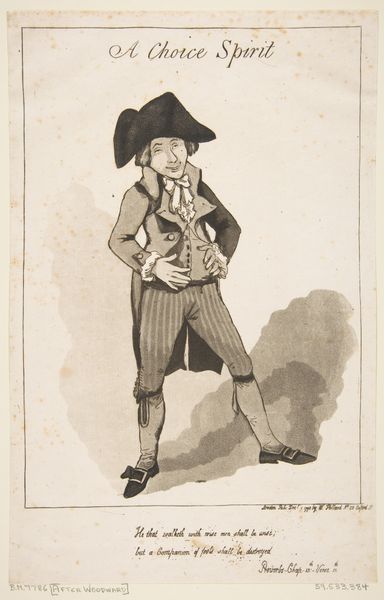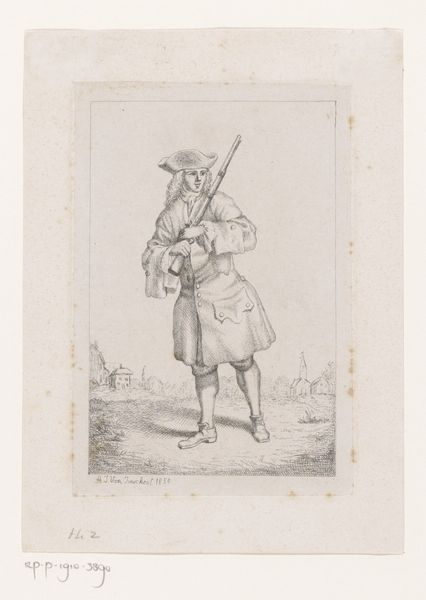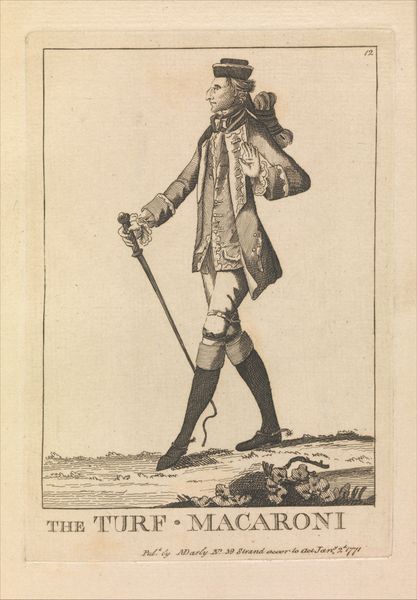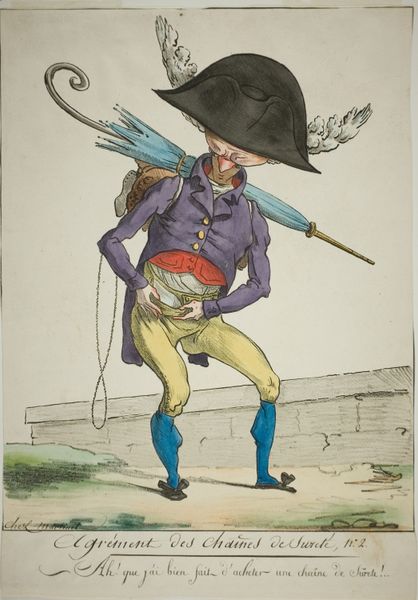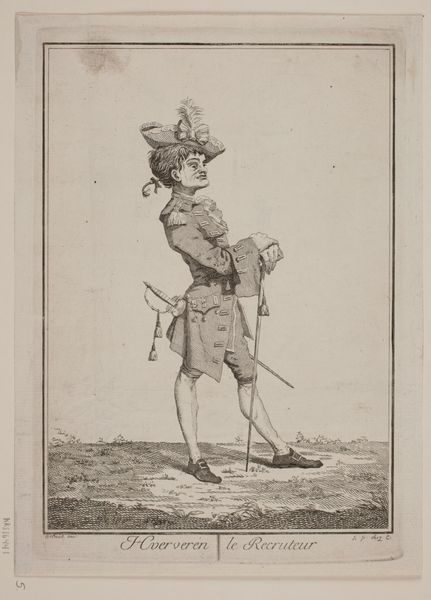
drawing, lithograph, print
#
portrait
#
drawing
#
lithograph
# print
#
caricature
#
genre-painting
#
modernism
Dimensions: Image: 20 1/2 × 14 9/16 in. (52 × 37 cm) Sheet: 22 13/16 × 16 13/16 in. (58 × 42.7 cm)
Copyright: Public Domain
Curator: Let's consider Manet’s 1874 lithograph "Polichinelle," currently housed at the Metropolitan Museum of Art. Editor: Oh, there's an intriguing ambivalence here! He looks at once forlorn and faintly menacing, almost a deconstruction of joy. Curator: That tension is certainly present. Polichinelle, as a character, pulls from the Commedia dell’arte tradition, usually depicted as comical, even absurd. Manet, however, hints at something more complex, a figure burdened by his role. It intersects with broader narratives around the performance of identity. Editor: Yes, the deconstructed harlequin suit with mismatched colors feels deeply symbolic of a fragmented self. And note the angle of the stick – is it a support, or a weapon? I sense layers of irony embedded in these visual cues, a disruption of traditional, light-hearted imagery associated with the Polichinelle figure. It resonates with a darker cultural memory, a critique of social masks, perhaps. Curator: It is important to remember the context. In 1874, Manet was dealing with societal changes. The piece almost becomes a commentary on the performative aspects of bourgeois life, questioning the roles assigned to individuals, specifically how men express strength, a social performance rooted in control, while masking any fragility or instability. Editor: Fascinating. So the garish colours and the drooping posture, along with the somewhat sinister expression, combine to portray a kind of forced joviality, the collapse of genuine joy into something brittle. There is almost a sense of a shadow of a real person behind a theatrical facade. I wonder about how deeply embedded the shadow self is in our collective imagination. Curator: Manet provides a reflection of his era’s social climate while raising questions that extend far beyond, touching on the construction of self and societal expectations that echo today. Editor: Indeed. Exploring the symbolism here definitely unlocks many avenues for understanding not only Manet's intention but our own assumptions around visual symbols.
Comments
No comments
Be the first to comment and join the conversation on the ultimate creative platform.
